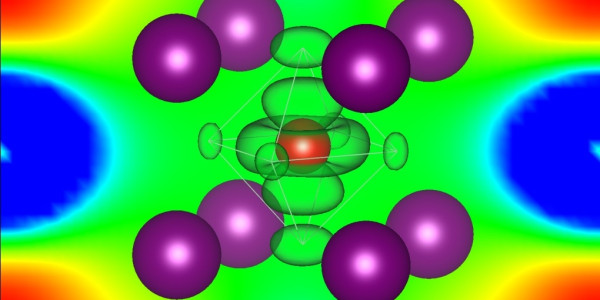The best of both worlds: combining accurate spectroscopy and thermodynamics for correlated materials
By Nicola Nosengo - NCCR MARVEL
A new study by MARVEL scientists published as a letter in Physical Review Research adds a new element in the toolbox of computational materials science, one that can help them deal with particularly complex materials and predict their behavior across different energy level.
The study aims to overcome a well-known limitation of current methods. Density functional theory (DFT), the staple tool for electronic structure calculation, works well when it comes to calculating the properties of a material at the lowest possible energy, known as the ground state. But it becomes much less reliable when dealing with spectroscopy, that is the way a material’s electronic structure interacts with electromagnetic radiation.
Calculating spectroscopic properties requires to use functionals that are not static, but vary with the frequency of the radiation, and that is a mathematical problem that has bothered theorists for a long time. That is particularly relevant when dealing with complex, correlated materials.
“We found out that this translates into dealing with a non-linear equations” says Tommaso Chiarotti, a scientist in Nicola Marzari’s laboratory of Theory and Simulation of Materials (THEOS) at EPFL. ”We had to invent a new way of solving non-linear equations in the context of condensed matter theory, that we called algorithmic inversion method and that allows to find the exact solution of the (non-linear) fundamental equation for embedded problems, the Dyson equation”.

This new mathematical framework was applied to calculate the spectrum of a material and its thermodynamics behavior at the same time, including the total energy and the band structure. Electronic structure codes like Quantum Espresso can do for simpler materials, where static functionals are enough, but it is still a challenge to do it for transition metal compounds, where localized electrons correlate their motion.
In particular, the method described in the study offers a new and efficient way to augment the DFT functional with a local and dynamical term. “We called this approximation ‘Dynamical Hubbard’ because it is a sort of generalization of DFT+U that results in a dynamic potential”, says Chiarotti. “This allows to calculate thermodynamic very well, as DFT+U does, but also to have very good spectra, because you are dealing with a localization of GW, a state-of-the-art approximation technique based on Green’s function”. You are, in other words, combining the best of both worlds: thermodynamics from DFT+U and spectra from GW.
To validate their method, Chiarotti and his colleagues applied it to transition metal oxides, and in particular to strontium vanadate (SrVO3). “We know DFT does not work so well on this type of materials”, says Chiarotti. “But with our new formalism and functional, we find that the spectra are equivalent to those calculated with state-of-the art methods such as GW + DMFT, and the total-energy properties (e.g., the bulk modulus) is better than in DFT”.
The project is resulting in several follow-ups, says Chiarotti. Not only he and the team are continuing to develop this formalism. They have tried their functional on a several monoxides, including iron, magnesium, cobalt and copper oxides, finding it works very well. Furthermore, they are generalizing the formalism to treat also strongly correlated materials.
Reference
Tommaso Chiarotti, Andrea Ferretti, Nicola Marzari, "Energies and spectra of solids from the algorithmic inversion of dynamical Hubbard functionals", Physical Review Research 6, L032023 (2024). https://doi.org/10.1103/PhysRevResearch.6.L032023
Low-volume newsletters, targeted to the scientific and industrial communities.
Subscribe to our newsletter